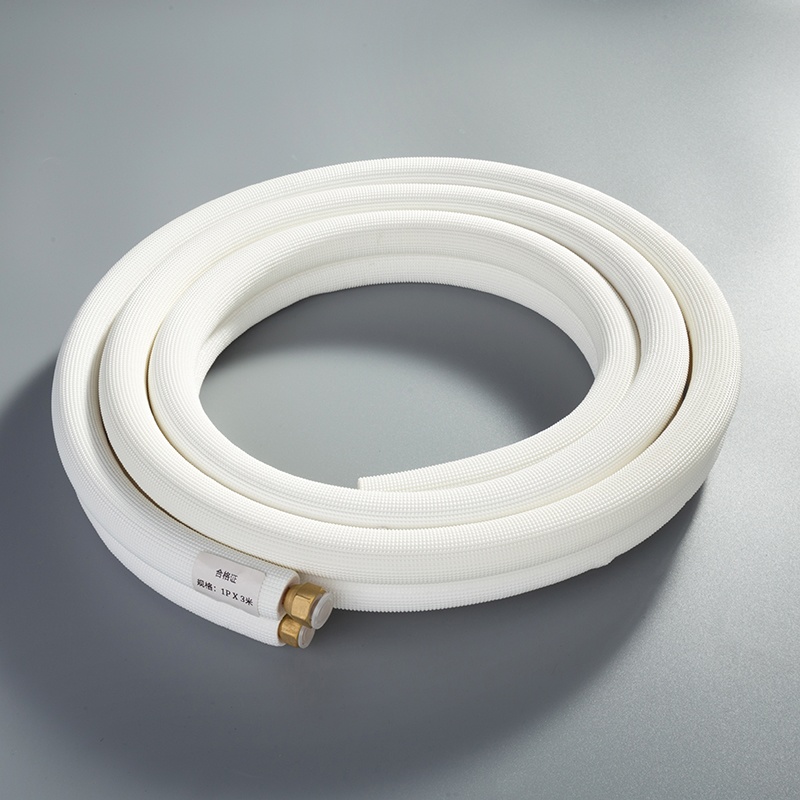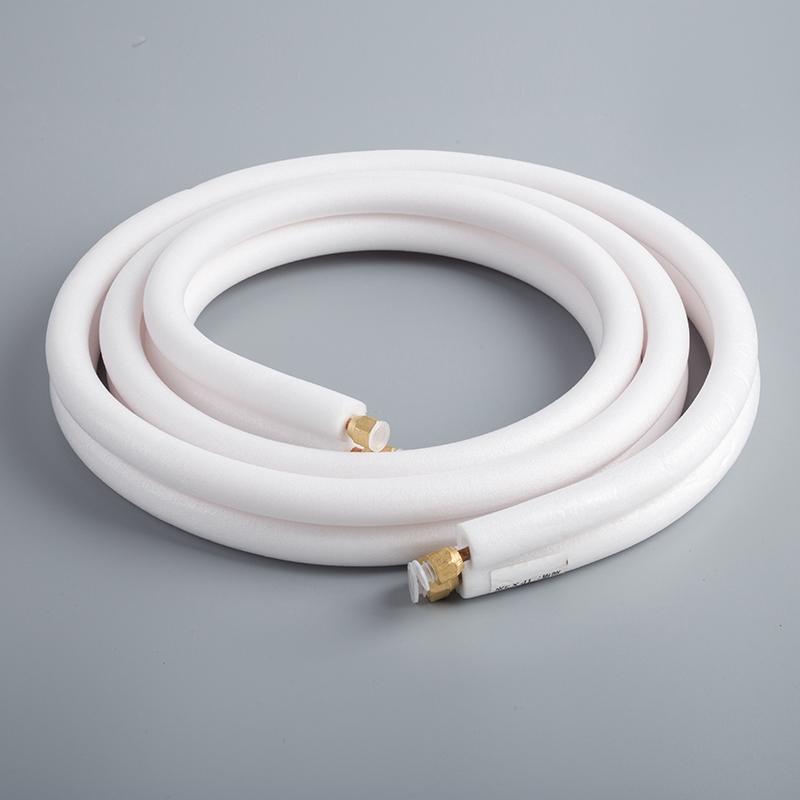What Factors Drive Copper Pipe Prices?

Copper pipes play a pivotal role across diverse industries due to their exceptional properties. Understanding what factors influence copper pipe prices is paramount for stakeholders navigating this dynamic market landscape. In this blog post, we delve into the intricate web of elements shaping copper pipe costs, from global market trends to technological innovations driving demand. By unraveling these key determinants, businesses and investors can make informed decisions in a market where precision is paramount.
Global Market Trends

When examining the Supply and Demand Dynamics of copper pipes on a global scale, it becomes evident that various regions showcase distinct market behaviors. The Global Production Levels of copper pipes differ significantly across regions like Asia-Pacific, China, Middle East & Africa, and Latin America. Each region contributes uniquely to the overall market share and growth projections for copper pipes and tubes.
In terms of Consumption Patterns in Key Industries, the Middle East & Africa region is poised for substantial growth driven by extensive infrastructure projects and rapid urbanization. Conversely, Asia Pacific stands out as a dominant force in both value and volume within the copper pipes market. The increased demand from emerging markets such as India and China plays a pivotal role in driving copper prices due to the escalating need for copper in infrastructure development.
Exploring International Trade Policies unveils critical factors influencing copper pipe prices. Considerations such as Tariffs and Trade Agreements can significantly impact the cost dynamics of copper pipes globally. Moreover, understanding Export and Import Regulations is crucial for stakeholders to navigate the intricate web of international trade policies affecting the pricing mechanisms of copper pipes.
Delving into Economic Indicators sheds light on essential elements shaping copper pipe costs. Fluctuations in Inflation Rates can have profound effects on pricing strategies within the copper industry. Likewise, monitoring Currency Exchange Rates is imperative for businesses and investors to adapt their approaches based on prevailing economic conditions.
Economic Indicators
When observing Commodity Market Trends, it becomes apparent that Copper Futures and Spot Prices serve as crucial indicators for market behavior. Monitoring these trends allows stakeholders to anticipate potential shifts in copper pipe prices, enabling strategic decision-making. Additionally, the Influence of Other Metal Prices on copper values underscores the interconnected nature of commodity markets, emphasizing the need for a comprehensive analysis approach.
Exploring Macroeconomic Factors unveils significant insights into the broader economic landscape impacting copper pipe costs. Understanding GDP Growth Rates provides valuable context on economic expansion or contraction scenarios, directly influencing the demand and pricing dynamics of copper pipes. Similarly, tracking Industrial Production Indices offers a glimpse into sectoral performance, reflecting the overall health of industries that heavily rely on copper.
Government Policies
Environmental Regulations
Emission Standards
Setting Emission Standards is a crucial aspect of government policies aimed at regulating the environmental impact of copper production.
Compliance with these standards ensures that the emissions released during the manufacturing process do not harm the environment or public health.
By enforcing strict Emission Standards, authorities contribute to a sustainable approach in the copper industry, aligning with global efforts for a greener future.
Recycling Policies
Implementing effective Recycling Policies is essential for promoting sustainability within the copper sector.
These policies encourage the recycling of copper materials, reducing the reliance on primary raw resources and minimizing waste generation.
Through robust Recycling Policies, governments can foster a circular economy model that enhances resource efficiency and supports long-term environmental conservation efforts.
Subsidies and Taxation
Government Subsidies for Mining
Providing Government Subsidies for Mining plays a pivotal role in incentivizing exploration and extraction activities related to critical minerals like copper.
These subsidies aim to boost domestic availability of copper mineral resources, fostering self-sufficiency and reducing dependency on imports.
By supporting mining operations through subsidies, governments contribute to strengthening national mineral reserves and enhancing economic stability.
Tax Policies Affecting Copper Production
Tailoring tax policies that directly impact copper production is essential for maintaining a conducive business environment within the industry.
Tax incentives or levies can significantly influence investment decisions in copper mining and processing facilities, shaping overall production levels.
Governments must carefully consider tax frameworks affecting copper production to ensure sustainable growth and competitiveness in both domestic and international markets.
Industry Demand and Supply

Construction Industry
Residential and Commercial Construction
The construction industry, a significant consumer of copper, utilizes the metal in various applications such as electrical wiring, plumbing, and roofing.
Global copper consumption stands at 26 million metric tons, reflecting a steady increase in demand for copper across industries.
In the US, the housing market emerges as one of the largest consumers of copper due to its extensive use in electrical wiring, insulation, and plumbing systems.
Rapid urbanization has fueled construction activities globally, leading to the development of infrastructure projects that heavily rely on efficient HVAC systems for cooling and heating.
The rise in demand for HVAC systems within the construction sector is expected to be a driving force behind the growth of the copper pipes and tubes market.
Infrastructure Projects
Urbanization trends have spurred the development of IT parks, malls, high-rise apartments, and skyscrapers worldwide.
These modern structures require advanced HVAC systems that are integral to their functionality and sustainability.
The increased adoption of energy-efficient solutions in infrastructure projects contributes to a surge in copper usage for piping systems.
Renewable energy sources, including wind turbines and solar panels, also contribute to the escalating demand for copper due to their reliance on the metal for efficient energy generation.
Electrical and Electronics Industry
Demand for Electrical Wiring
Copper's conductivity properties make it an ideal choice for electrical wiring applications across industries.
The reliability and efficiency of copper wiring play a crucial role in ensuring stable electrical connections in various electronic devices.
As global technological advancements continue to evolve rapidly, the demand for high-quality copper wiring remains robust.
Technological Advancements
Ongoing technological innovations drive continuous improvements in electronic devices that necessitate advanced materials like copper.
The integration of smart technologies into various products further amplifies the need for reliable and durable copper components.
Electric vehicles, which require four times more copper than traditional gasoline-powered cars do, are significantly contributing to the surge in global copper demand.
Automotive Industry
Electric Vehicles
The automotive industry is experiencing a transformative shift towards electric vehicles powered by sustainable energy sources.
Electric vehicles rely heavily on copper components for their electrical systems, batteries, and charging infrastructure.
With increasing environmental awareness driving consumer preferences towards eco-friendly transportation solutions, electric vehicles are poised to reshape the automotive landscape.
Traditional Automotive Manufacturing
While electric vehicles gain momentum in the market, traditional automotive manufacturing processes also contribute substantially to global copper consumption.
Internal combustion engine vehicles continue to utilize copper extensively in various components like radiators and braking systems.
The intricate interplay between evolving industry demands and supply dynamics underscores the pivotal role that copper plays across diverse sectors. As technological advancements continue to shape consumer preferences and industry standards, staying abreast of these developments is essential for businesses seeking strategic growth opportunities.
Specific Market Dynamics
Technological Innovations
Advancements in Mining Technology have played a pivotal role in enhancing the efficiency and sustainability of copper extraction processes. By implementing state-of-the-art technologies, mining companies can streamline operations, reduce environmental impact, and optimize resource utilization. The integration of automated systems and digital solutions has revolutionized the mining sector, enabling precise exploration and extraction techniques that boost productivity and cost-effectiveness.
New Applications for Copper Pipes have emerged as a result of ongoing technological advancements in various industries. The versatility and durability of copper pipes have led to their increased utilization in innovative sectors such as renewable energy, telecommunications, and healthcare. For instance, the development of advanced medical equipment requiring reliable piping systems underscores the continuous evolution of copper's applications across diverse domains. As new technologies continue to reshape industrial landscapes, the demand for specialized copper pipe solutions is expected to surge significantly.
Market Speculation
The Role of Speculators in Price Fluctuations within the copper market cannot be overlooked. Speculators play a crucial role in influencing short-term price movements through their trading activities based on market forecasts and trends. Their participation in futures contracts and options trading adds liquidity to the market but also introduces volatility that can impact copper prices unpredictably. Understanding the behavior of speculators is essential for stakeholders seeking to navigate price fluctuations effectively.
The Impact of Market Sentiment on Copper Pipe Prices reflects the collective perception of investors, traders, and industry experts regarding future market conditions. Positive sentiment towards economic growth or technological innovations often drives up demand for copper pipes, leading to price appreciation. Conversely, negative sentiment stemming from geopolitical tensions or economic uncertainties can trigger sell-offs and downward pressure on copper prices. Monitoring market sentiment provides valuable insights into potential price trends and helps stakeholders make informed decisions amidst market volatility.
Exploring the intricate web of factors that influence copper pipe prices reveals a complex ecosystem where global market trends, economic indicators, government policies, and industry dynamics converge. The increased demand from both industry and consumers due to its many uses in technology and infrastructure development has historically been a main driver behind the rise in copper prices. Moreover, political instability in countries that produce or export copper can disrupt supply chains and lead to volatile market conditions. Staying informed about these multifaceted influences is crucial for making strategic decisions in the ever-evolving copper market landscape.
See Also
Insights on Why Copper Pipes Outperform PVC Environmentally
Exploring the Durability of Copper Pipes Buried Underground
Top 5 Affordable Options for Purchasing 1/4 Inch Copper Pipe
The Advantages of Copper Pipes in Revolutionizing Air Conditioning


